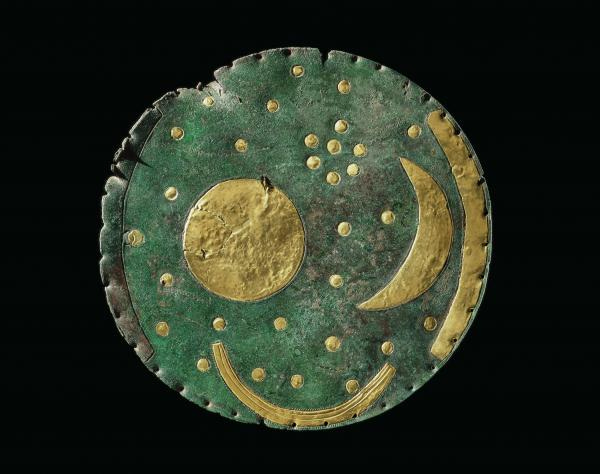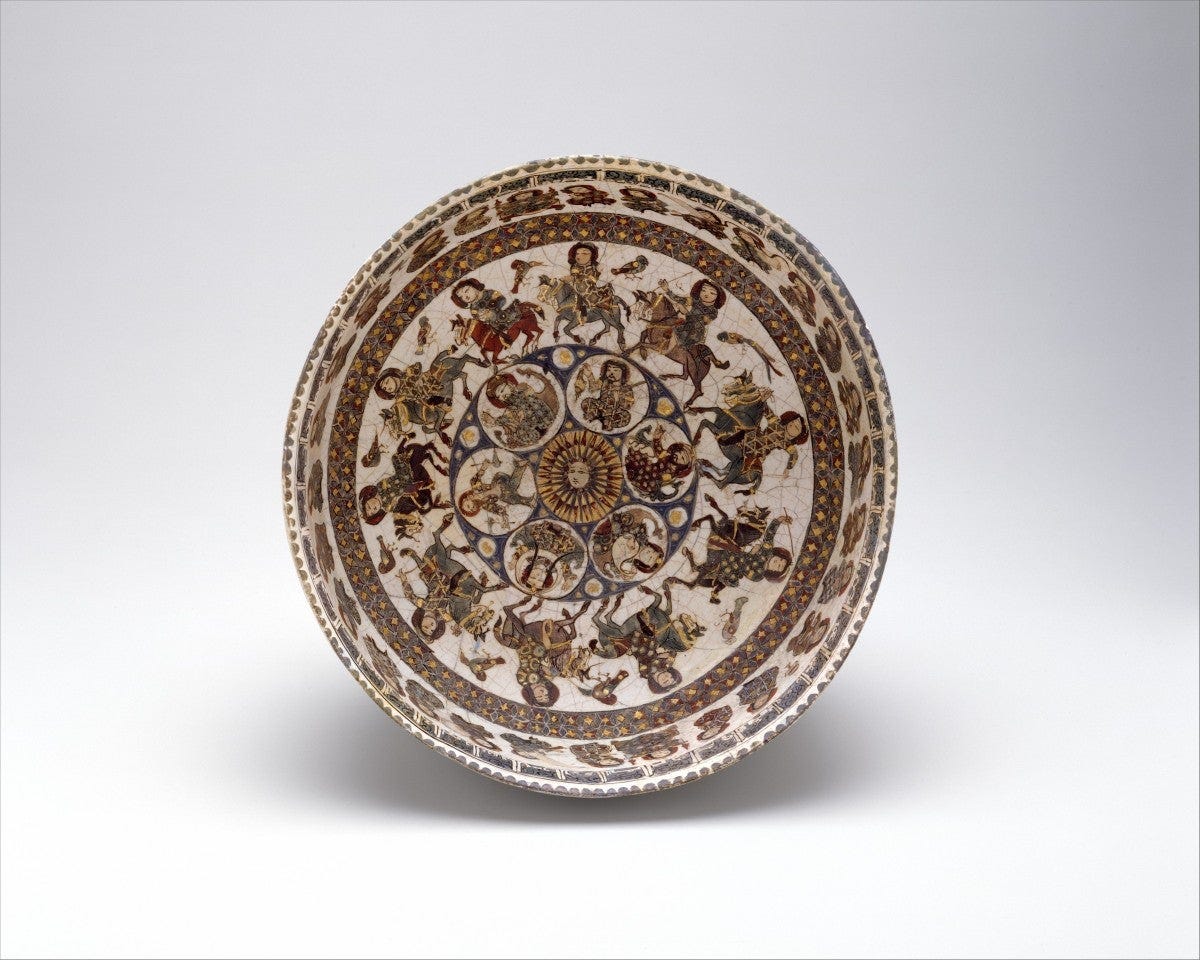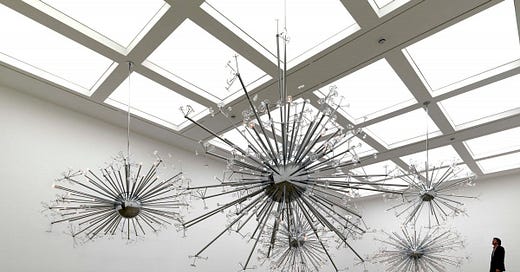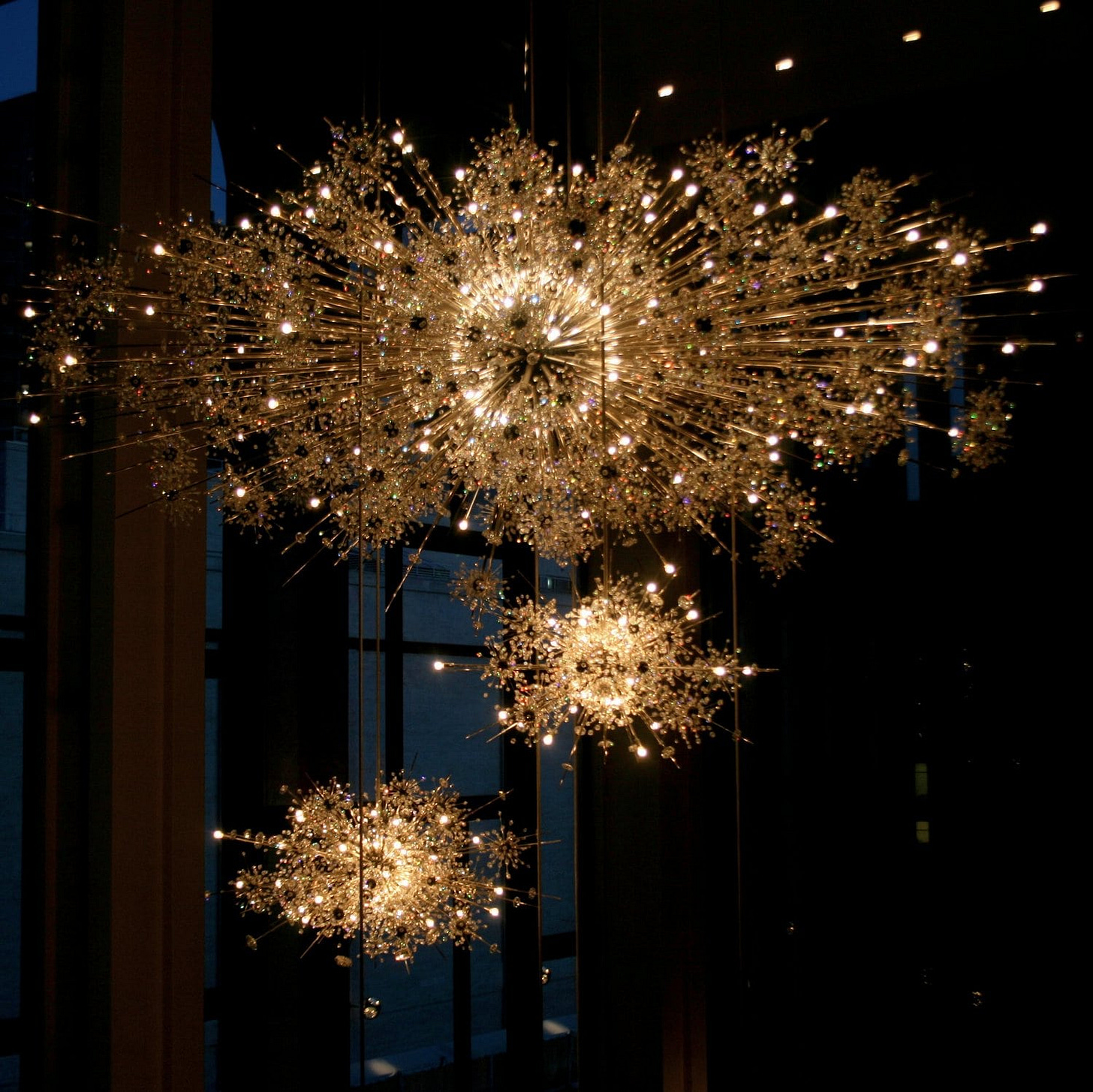The World Above is the World Below: A Glimpse of Global Cosmologies
Christopher Suzuki, Art Muse Lecturer
Where do we come from? What is our place in the Universe? How does it all work? These questions have been central to the human experience since we first evolved into being and each culture and era has answered them in their own unique way. Reflecting more the world and structures that they lived in, than the heavens above, each worldview or cosmology is a window into an entire way of being, a people, a history. They evolved and learned from each other and the observable world over time, creating rich tapestries of meaning and connection. Currently on view at LACMA as part of the Getty’s PST event, Mapping the Infinite: Cosmologies Across Cultures, looks at one hundred and twenty works created over twelve millenia. Spanning the globe from Neolithic Europe to the Medieval Islamic Caliphate, from Ancient Egypt to modern astrophysics; the show gives a comprehensive look into the ways humans have sought to bring meaning and understanding to their world up to the present day. Partially done in conjunction with the Griffith Observatory, in celebration of the centennial of Edwin Hubble’s discovery of other galaxies right here in California; the show juxtaposes art alongside scientific equipment, showing the ways the history of science often informs and grows from the history of art. By looking more closely at three objects from the exhibition we can see how each is a key into an entire universe, and how the world story is reflected in political structures and cultural practices.
The rhythms of our lives are dictated by the movements of the heavens, the seasons come from the earth's tilt, the tides from the pull of the moon; this was even more true for neolithic humans. They needed to know the precise day to plant their crops and the exact time to harvest them, to miscalculate could mean death for the whole community. Those who had knowledge of the movements of the sun and moon and the timing of the seasons held the power of life in their hands. Crafted sometime between 1800-1600 B.C.E., the Nebra Sky Disc, (named for the village in Germany where it was found) is an example of that knowledge and the wealth and culture that birthed it.

Made of bronze with added details made from two sources of gold, the disc seems to depict the sun, moon and stars; with two gold arcs (one now missing) that match the angles between the summer and winter solstices. A third crescent shape is debated to be a solar barge, the Aurora Borealis, or possibly a sickle. Looted from its find site illegally in 1999, the disc was found buried with two bronze swords, two sets of axes, a chisel, and fragments from spiral armbands. Believed to be a settlement of the Central European Unetice culture (2300-1600 B.C.E.) The Disc was buried in a large sacred enclosure that had alignments to the equinoxes and the solstices. Nearby were found the remains of a village and a barrow tomb belonging to a high ranking Prince. Although we don't know the exact uses for the enclosure or the Disc, the expense needed to make the object and the enclosure imply important seasonal rituals. It shows that an early agrarian people were aware of the connections between events on earth and the skies. The Nebra Disc is the oldest depiction of astronomical phenomena ever found and the first portable object depicting the stars found in Europe. Thirty two stars are depicted alongside the moon and Sun with special emphasis given to depicting the Pleiades. The Disc is believed to have been made to sync up the solar and lunar calendars and some believe it shows the nineteen year luni-solar Metonic cycle, where the same moon phases appear at the same time of year. The Unetice culture was an early almost proto-state with an aristocratic leadership over a traditional clan based organization of farmsteads, believed to be connected with the culture that built stonehenge (another site connected to the solstices). They traded with the wider world with some of the gold on the disc coming from Austria and some of it from England. The knowledge of the heavens seems to belie a connection to the astronomers of Babylon; while the style is similar to art found on rings from Mycenae in Greece. This proves a wider interconnected world than is often believed for neolithic times. The disc allowed for the prediction of lunar eclipses, anticipating the astrolabes of the Islamic Middle ages over two thousand years later. Such an object must have been a symbol of power for its owner with its burial at the center of their sacred space shows the reverence afforded to the knowledge it held.
Our next object takes us thousands of years into the future and across continents to Iran during the Islamic Golden Age. Created sometime during the late twelfth and early thirteenth centuries, during Persia’s rule by the nomadic Seljuq Turks, this exquisitely crafted ceramic bowl was painted with images of the Sun, the known planets, courtly riders, and musicians playing for two kings. Embellishing the paintings was enamel or Mindi in gold all against a white background.

The wealth the underlied the creation of objects like this and in fact the entire Islamic Golden Age came from the location of their empire at the center of the world, halfway between the Byzantines, India, and Tang China, all trade flowed through Islamic cities. Alongside this trade came ideas, religions, science, and arts from all over the world, converging in one place for the first time. This alongside the Quan’s command to seek out all knowledge no matter how far was the seed that flowered into the Islamic Golden Age. From a need to pray toward Mecca came the invention of trigonometry to find the curve of the earth, from the need to set festivals and navigate vast oceans came the understanding of Astronomy. In the bowl itself we see not just a map of the universe as they knew it, but also how that is mirrored in human affairs. The Sun at the center also has the face of a king, the anthropomorphized planets that circle the Sun as a king's advisors and generals do. Beyond them is the world of court and wider world, the Sun could also be read as Allah ruling over the planets and ending in the human sphere. The small circles around the planets represent the constellations, central to the art of astrology which was largely indistinguishable from astronomy at the time. The movements of the stars and planets were seen to be mirrors on human affairs on earth, and a king's ability to read both was essential. The depiction of the planets themselves are a blend of Greek and Indian ideas about their nature. Much study was done to reconcile Greek and Indian ideas on mathematics, physics, and astronomy at this time, leading to greater discoveries in all fields. On the bowl we see human planets with attributes found in Greek and Hindu sources, with Saturn himself always depicted in art of the period as an old Indian man. Having the princely courtiers come after the planets shows the astrological and thus divine nature of the princely cycle. The universal structure is seen to support the human one in perfect order.
The final piece discussed today is a contemporary one that blends design, art, and astrophysics. Josiah McElheny’s installation, Island Universe, (2008) is an addendum to the larger Mapping the Infinite show. Acquired by LACMA in 2020 this is the first time it has been exhibited since acquisition. McElheny was Inspired by the chandeliers of J& L Lobmeyr at the Metropolitan Opera (below) , which he thought were perfect visual expressions of the Big Bang theory as it was publicly understood at the time. A time he felt when modernities stories were fraying and a new horizon and design aesthetic was being seen.
He wanted to create his own version that matched current cosmological thinking. So working alongside astrophysicist David Weinberg he created Island Universe. The title goes back to a theory that was first considered by the Islamic astronomers and gained traction in the 18th century, namely that our Sun is one of many in a complex system called a galaxy, which may be one of many in a vast cosmos. This theory would be proven on Mount Wilson by Edwin Hubble in 1924 and is part of the reason for the installation.
The work is a fusion of design theory, science, and art history. The light bulbs glow at different levels of brightness and each chandelier glows differently. They are meant to represent the concept of the multiverse, the current theory of the universe, but one that was developed in ancient Hinduism and Buddhism, medieval Islam, and 18th century European science. It speaks to the idea that all possibilities are happening at once in separate universes, all forms of physics, all forms of life. Each part of the chandelier represents a different scientific concept or celestial object. The brightest light bulbs are the brightest things in galaxies quasars, glass discs and spines are clusters of galaxies. Each chandelier is a distinct universe with others branching off, the artist describes it as “drawings of time, each rod a measure of time- every inch, time doubles.” The work was originally shown alongside films that depicted the separate universes and the physics they involved. This work stands at the pinnacle of millennia of looking at the sky and telling new and more accurate stories; it grows from the earth of the Nebra Sky Disk and flowers from the research of the Islamic Golden Age, including all the insights along the way. For with the possibilities of the multiverse there is no singular truth, but many divergent truths happening all at once.
Each of these pieces, alongside the many others in the exhibition, are a perfect encapsulation of the cosmology that created them. They speak to a history, a people, an entire universe of belief; one building upon the other until we reach the multivalent world of today. They bely their cultural biases and exemplify their cultures triumphs, all working together to help us understand the scope of the human story and its search for truth and meaning across time.





